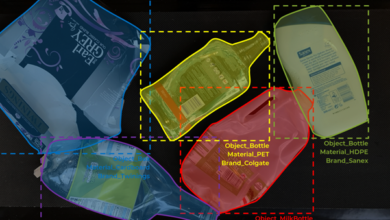
This article was written by Wayne Butterfield who is a Director at ISG
Demand for effective uses of artificial intelligence in life sciences has increased in recent years according to research from the Pistoia Alliance (it also found that the use of AI rose by 26% between 2017 and 2019). The global pandemic, and rush to develop a vaccine, is likely to fuel this growth further.
AI could be a boon to the pharmaceutical industry. Predictive analytics allows developers to simulate drug-molecule combinations, which enable drug manufacturers to bring drugs to market quickly and effectively.
AI also helps manufacturers customise and improve patient experience during clinical trials. It streamlines the collection and processing of data and helps manufacturers use real-world data to develop the most effective medication – which is especially important when you’re dealing with a global pandemic.
While budgets remain strong, pharma companies that want to partner with providers that specialise in AI can find the process of searching for, selecting, and working with the supplier confusing. So, how can pharma businesses find the right partner for their organisations, and how can they get the best results once they’ve agreed on the deliverables?
Five Steps to finding the right AI partner
1. What’s the problem? First, you need to analyse why you need an AI partner. Start with agreeing which problem(s) needs addressing; everyone in the business needs to be on the same page. How do you expect AI to help solve it? Knowing this can help sell the necessity of the partnership to others on your team and avoid costly scope creep. You need the entire company on board with the project if it’s to succeed.
2. Assess the risk. Understand the risks involved in the project before work gets going. Does the solution need to be fully operational from day one? If that’s the case, you’re best going for a solution that’s tried, tested, and supported rather than something more experimental.
3. What do you want from the AI solution? Are you looking to introduce AI to develop drugs faster, or in a more cost-effective way? Are you hoping to run AI alongside RPA to provide a more user-friendly internal system for your employees? How will you define success? All of these factors will let you assess how important cost factors are, as opposed to extra features and help guide you towards the best path to implementation.
4. Align internal teams. Form a steering committee to guide the process. Ideally, it would include leadership from all relevant operational departments, including relevant specialists from IT, finance, procurement, and quality control. Set up a test-user group – selected from the proposed userbase. They will let you know what features they want and will let you know how easy the system is to use.
5. Secure resources. Budget for unexpected changes. Every unplanned change made to the project will increase the cost of implementing and running it, so it’s best to allocate more budget than you think you’ll need. You’ll also need to resource time for due diligence. You need to see what the live tool is capable of and see any data the provider has on performance.
The need for continual relationship management
Once pharma companies start working with AI partners, they need to focus on the desired output. It must be easy to understand and clear on deliverables and expectations. Continually assess whether the previously agreed output is still delivering the right business outcome, as priorities change, so don’t hesitate to renegotiate if needed.
Accountability is also crucial. Everyone should know who’s in charge, who they should go to with questions, and who resolves conflicts. Have a clear approval process on deliverables and changes to operating strategies as well.
Document everything and continually monitor the provider’s performance. It may seem like overkill at times, but there needs to be proof that the provider has adhered to any regulations. You should already have success criteria in place; use metrics and KPIs to measure progress in key areas such as risk and service quality.
Keep talking to each other. Keep the AI partner informed of changes, and new team members trained to the standards you’ve set. Be proactive when faced with problems or frustrations. Remember that this is a partnership.
As it’s a partnership, it’s important to remain flexible and open to suggestions for improvement. Your AI partner will work best when they can use their full experience to make suggestions that you may not have considered.
There’s great potential for AI use in pharma, but working with a specialist AI partner to deliver on that potential demands clarity of purpose, structure, a focus on outcomes, and clear communication to deliver on it.





